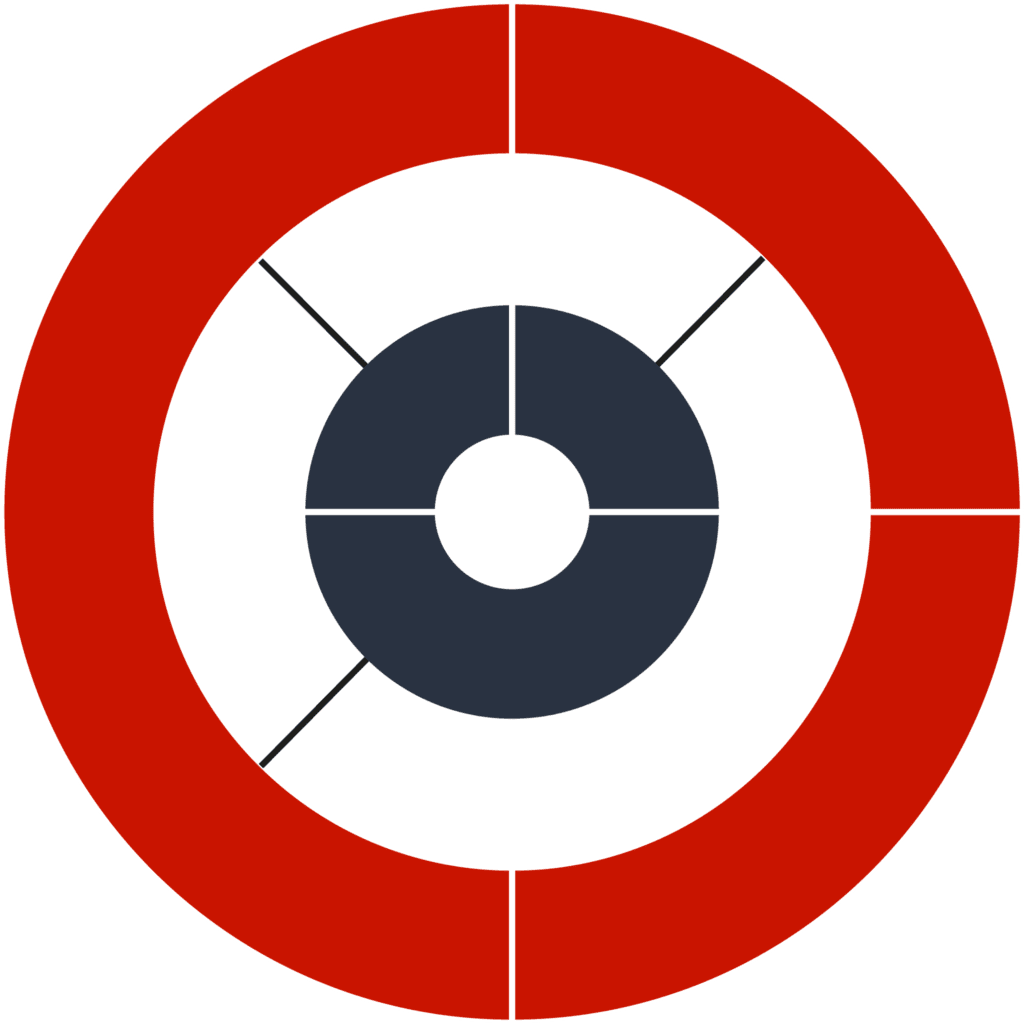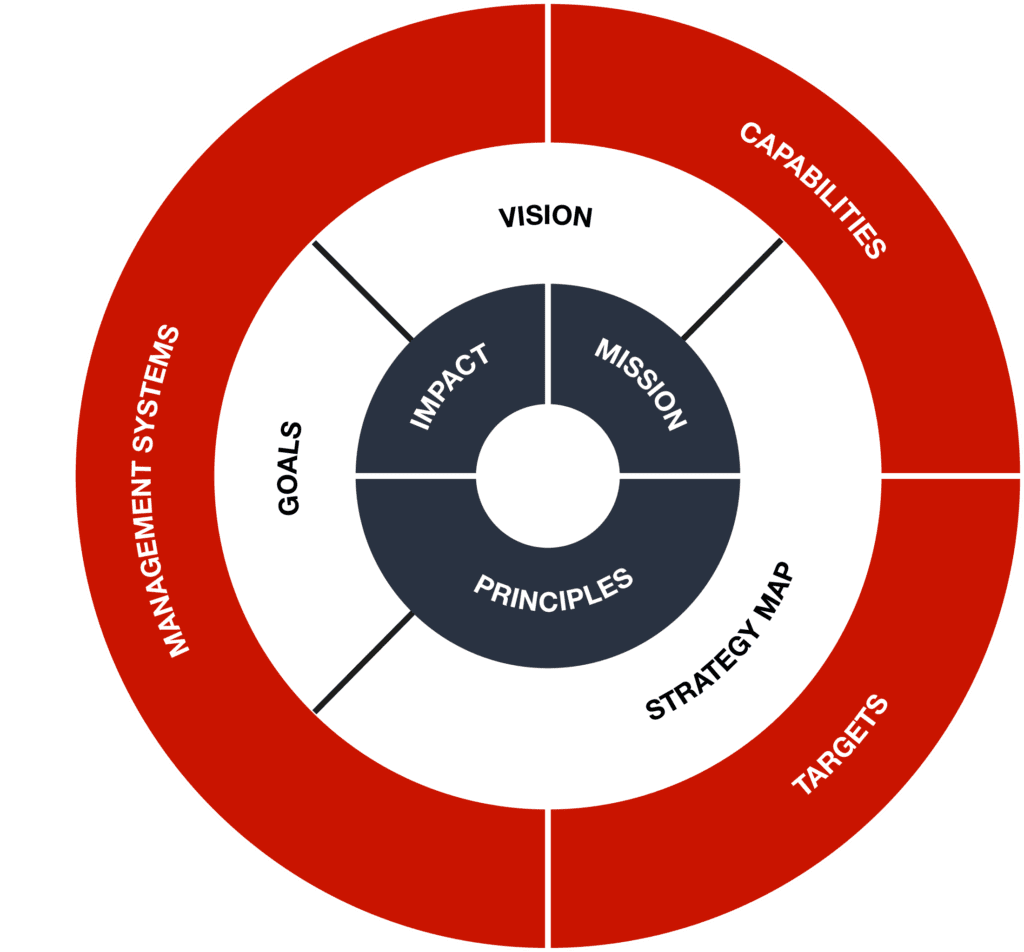9EOI - The Nine Elements of Organizational Identity
The 9EOI framework is the proven model created by Alex Brueckmann to help organizations align leadership, culture, and strategy.
Senior leaders, consultants, and facilitators use 9EOI to shape high-performance organizations.

How 9EOI helps you Win
Leadership, culture, and strategy are too often treated as separate conversations – each addressed in its own silo, with its own process and language. But they aren’t. They can’t be.
Strategy needs to be connected to the whole organization. Ideally, strategy guides the decisions of everyone, everyday – from the way leaders lead, to how we measure individual performance targets.
If those threads aren’t woven together – right from the beginning – strategy won’t achieve the desired results. No matter how good it looked on paper.
When I began defining the elements that make strategy stick, it quickly went beyond strategy itself. There are in fact 9 Elements. Together, they are the Nine Elements of Organizational Identity: the 9EOI framework.
I’ve structured them in three circles.

Strategic Choices (white circle)
Vision – What the organization aspires to become
Strategy – The choices the organization makes to achieve the vision
Goals – The measurable organizational goals, derived from the vision
Cultural Core (blue circle)
Principles – Diamond values and behaviors that guide the organization.
Impact – The value the organization wants to create for clients, based on its purpose
Mission – What the organization does, and for whom
Execution Edge (red circle)
Capabilities – The must-have skills that enable people to implement strategy
Targets – The individual targets that create a line of sight from strategy to individual performance
Management Systems – The structures, processes, and systems that enable an organization to thrive
The Cultural Core: Impact, Mission, Principles
This is the foundation. Your Cultural Core. You start here – always.
It still surprises many leaders when I say this, but before you define a strategy, you have to define who you are. This is the cultural layer – the part that gives strategy meaning.
Impact is the core piece – the element that is often overlooked or confused with mission.
Impact defines the change you want to create in the world when you do your work well, and helps people connect emotionally to the bigger picture behind their daily efforts.
Without a clear and visible sense of impact, strategy feels abstract. People don’t see how it connects to their work – or why it matters. Once impact is defined, the strategy starts to land. It becomes a shared direction.
Mission defines what you do and for whom.
It’s not aspirational. It’s a clear, practical statement of your field of activity – something every employee can understand and act on.
Principles are the behavioural anchor. They define how people collaborate, make decisions, and lead. They’re what turn culture into something visible and teachable – especially during change.
When any of these elements are missing, the strategy lacks emotional weight.
When they’re in place, everything else aligns more easily.
The Strategic Choices: Vision, Strategy Map, Goals
This is the strategic core of your identity.
These are the elements many organisations believe they already have.
But without the cultural foundation underneath – and the management systems to support it – this layer doesn’t lead to real change.
Vision creates direction. It gives people a picture of the future they’re working toward – something they can commit to, not just nod along with.
The Strategy Map connects your strategic priorities into a coherent whole.
It shows how each priority contributes to your direction – and makes the logic behind your choices visible. That clarity helps teams focus and coordinate their efforts.
Goals break the strategy down into measurable outcomes. They make progress visible.
But if these tools sit in isolation – without the inner circle to give them meaning, or the outer circle to reinforce them – they don’t stick. Strategy becomes a plan that’s understood by a few, and ignored by the many.
The Execution Edge: Targets, Capabilities, Management Systems
This is the Execution Edge, the scaffolding. It’s what makes strategy stick. And it’s almost always missing.
You have the strategy and it looks good, it looks shiny, but then it just falls apart because the scaffolding is not there to hold it in place.
This layer solves that.
Capabilities are critical – for leaders and teams.
Leaders need the skills to guide strategy conversations. Teams need the skills to work in new ways. And both need clarity about what success looks like.
Targets make individual contributions visible and measurable.
Without targets, it’s unclear whether the work people are doing is advancing the strategy – or simply maintaining the status quo.
Management Systems reinforce the strategy over time.
They embed it into the way performance is tracked, decisions are made, and progress is measured. Without them, the organisation keeps defaulting to old priorities.
Why 9EOI is structured this way
The elements are arranged in concentric circles because strategy only works when it’s built on a clear cultural identity – and backed by systems that support it.
Once that foundation is clear, we build the strategy piece.
Then we put the systems in place to make it stick.
This sequence is what prevents the usual failure points.
And now, when I check in with clients months down the line, I don’t hear,
“Nothing’s changed. We’re still running into the same issues.”
Because they’re not.
Want to see how this could work inside your organization?
Click here to see what’s inside 9EOI Strategy Certification and what leaders say about their experience and ‘aha’ moments.
